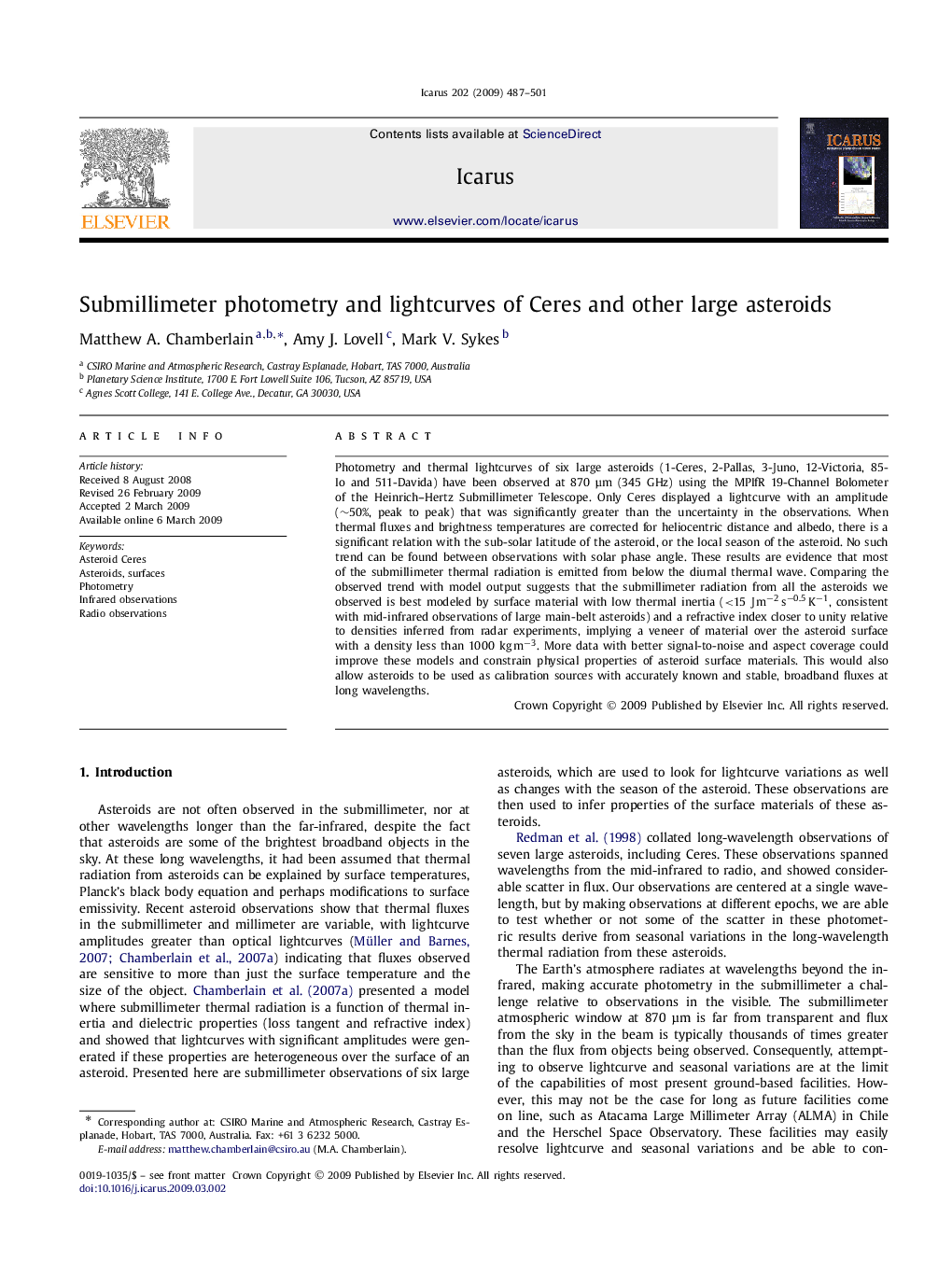| Article ID | Journal | Published Year | Pages | File Type |
|---|---|---|---|---|
| 1775038 | Icarus | 2009 | 15 Pages |
Photometry and thermal lightcurves of six large asteroids (1-Ceres, 2-Pallas, 3-Juno, 12-Victoria, 85-Io and 511-Davida) have been observed at 870 μm (345 GHz) using the MPIfR 19-Channel Bolometer of the Heinrich–Hertz Submillimeter Telescope. Only Ceres displayed a lightcurve with an amplitude (∼50%, peak to peak) that was significantly greater than the uncertainty in the observations. When thermal fluxes and brightness temperatures are corrected for heliocentric distance and albedo, there is a significant relation with the sub-solar latitude of the asteroid, or the local season of the asteroid. No such trend can be found between observations with solar phase angle. These results are evidence that most of the submillimeter thermal radiation is emitted from below the diurnal thermal wave. Comparing the observed trend with model output suggests that the submillimeter radiation from all the asteroids we observed is best modeled by surface material with low thermal inertia (<15 J m−2 s−0.5 K−1, consistent with mid-infrared observations of large main-belt asteroids) and a refractive index closer to unity relative to densities inferred from radar experiments, implying a veneer of material over the asteroid surface with a density less than 1000 kg m−3. More data with better signal-to-noise and aspect coverage could improve these models and constrain physical properties of asteroid surface materials. This would also allow asteroids to be used as calibration sources with accurately known and stable, broadband fluxes at long wavelengths.
